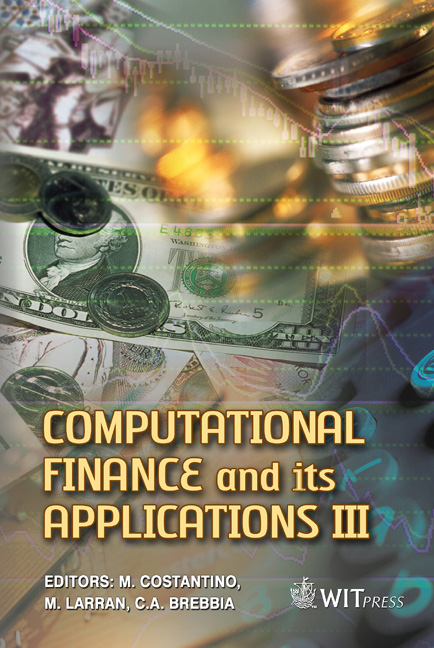Looking For Short Term Signals In Stock Market Data
Price
Free (open access)
Volume
41
Pages
10
Page Range
157 - 166
Published
2008
Size
650 kb
Paper DOI
10.2495/CF080151
Copyright
WIT Press
Author(s)
A. Bocharov
Abstract
This paper offers a method for generating discrimination criteria that can be used to identify strong patterns in stock market data. More effective criteria are necessary as short-term trades are often driven by noise rather than valid market signals - a viewpoint known as the "noisy trader" model of the stock market. To demonstrate why traditional technical analysis falls short, we applied the standard methods to a synthetic market generated by a random walk. Although the market data is engineered to be pure noise, technical analysis "discovers" strong features such as accumulation/distribution patterns, upward and downward trends, support and resistance levels. These secondary features represent noise in the technical indicators. By comparing the performance of these indicators between a real market and the synthetic noise market, real signals can be identified. We select a subset of technical indicators {T} such that each indicator T in this subset has a mesokurtic (usually, near-normal) distribution across the synthetic noise market. It turns out that many of the common measures (e.g. accumulation, relative strength, moving average trend direction) are mesokurtic for the noise market, but have strongly leptokurtic distributions across the actual stock market. We propose a method for using the kurtosis of such indicators T to separate the noise from the real signal in the indicators. Specifically, having obtained a mesokurtic baseline that corresponds to noise, we use the empirical real market distribution for indicator T to compute discrimination thresholds beyond which a value of T should be considered a strong signal. The strong signal concept is validated using historical price/volume data for the Standard & Poor’s 1500 (S&P 1500) set of stocks. Keywords: market analysis, kurtosis risk, random walk, technical analysis.
Keywords
market analysis, kurtosis risk, random walk, technical analysis.





